Here’s a product name I didn’t expect to come back: it’s the Roland GAIA 2. But despite the name and form factor, the new GAIA has a different architecture – virtual analog plus wavetable, and support for (some) Model Expansions so you can swap out different instrument engines.
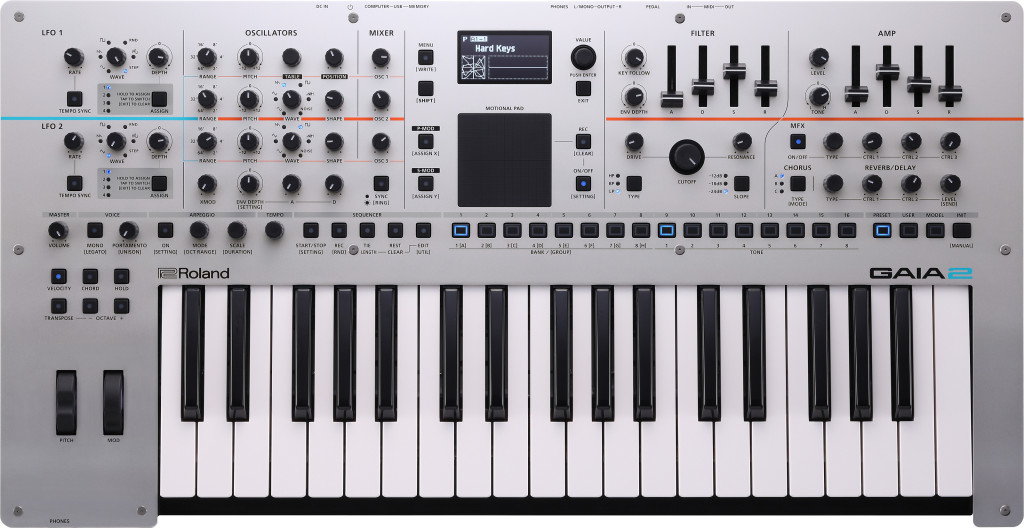
Unnecessary Roland history
First, step through time with me to 2010. The SH-01 GAIA was a 64-voice polysynth with its own virtual analog engine, billed as the sequel to the breakthrough hit SH-201. Sure, the toy-like appearance of that SH-201 might not win much praise now, but recall that in the 2000s, Roland was going against the grain with a synth that was hands-on, covered in faders and knobs, and (mostly) one-knob-per-function. The SH-201 helped pave the way for the synth renaissance we’re in now.
Here’s that original GAIA and the SH-201, both of which I reviewed for Keyboard back in the day:
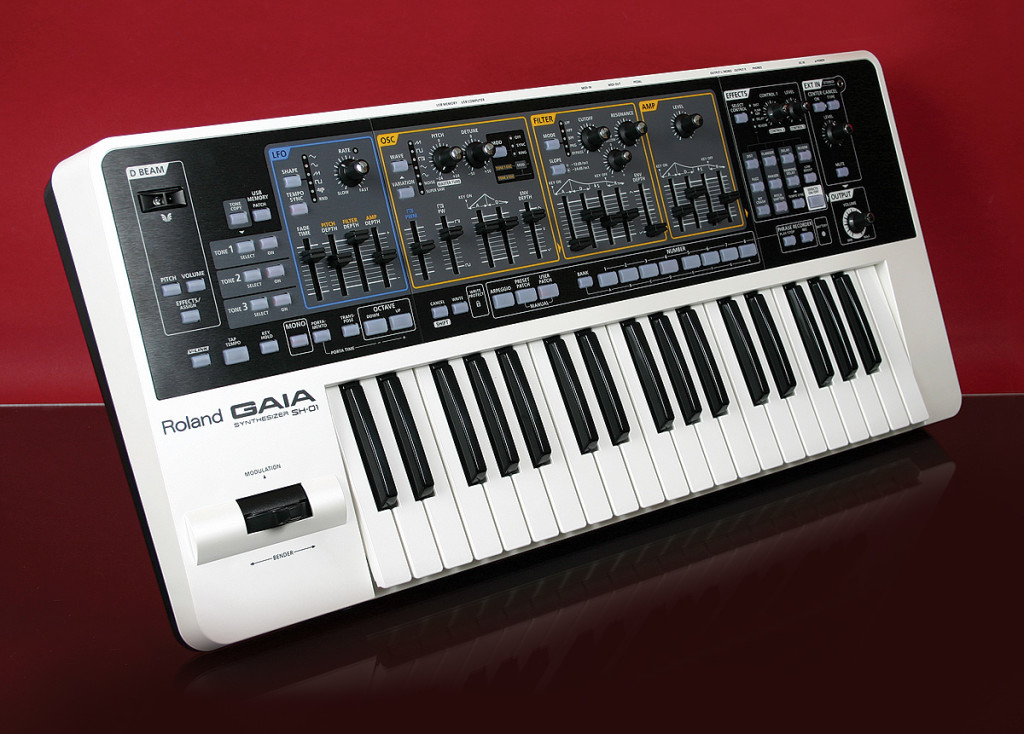
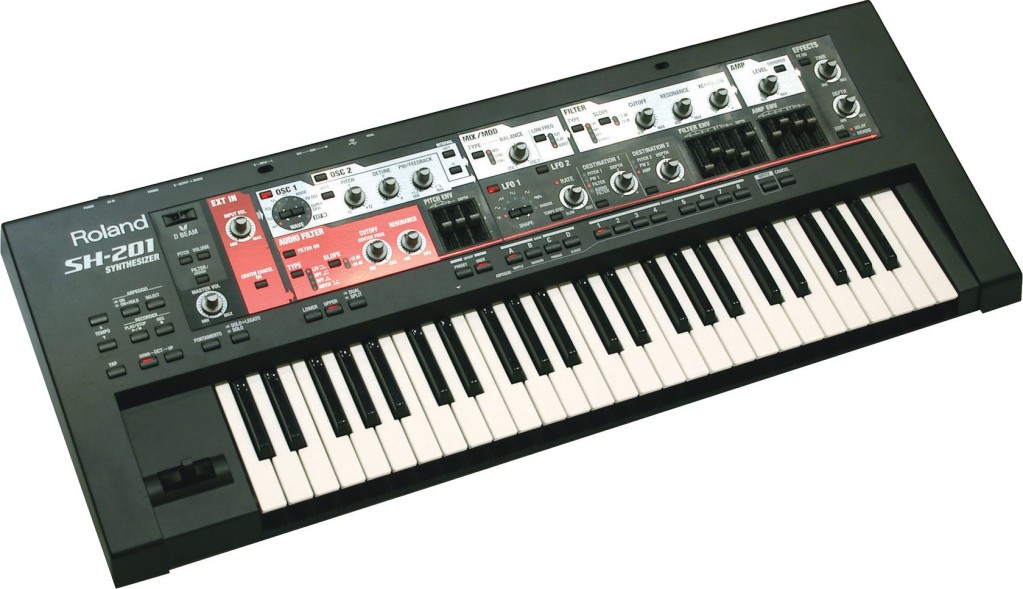
But yes, in the Rolandverse, the thing called the SH-01 was 64-voice as opposed to the monophonic original, it was the sequel to something called the SH-201 which came first (but did have two oscillators), and now we have a GAIA 2 which has no SH designation (though… maybe thanks for not calling it the SH-22d GAIA 2 or something.)
Honestly, let’s forget all of that. The GAIA 2 has roughly the footprint and price point of the first GAIA. And the GAIA was really a big hit. Roland could use something with keys in this price range, since the SH-4d is a desktop model with push-button keys and sequencer.
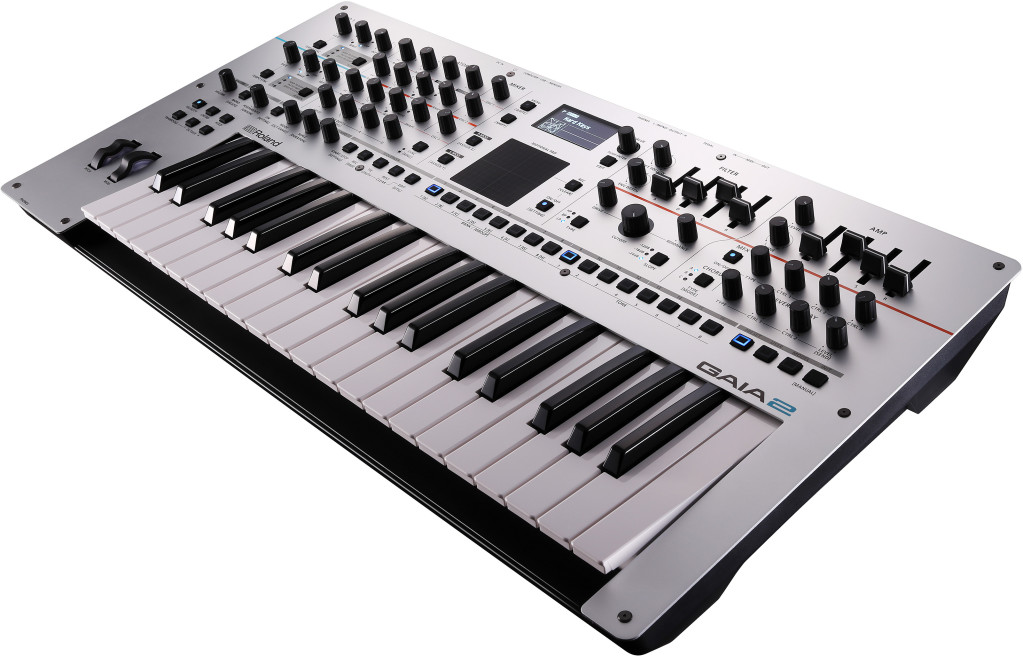
Wavetable + virtual analog + Model Expansions
Despite the hate it’s earning online, the GAIA 2 might be the first synth to make a good pitch for adding a Roland Cloud subscription to your synth purchase – because then you can make the GAIA 2 into one of multiple synths.
Onboard, you already have a decent architecture – less polyphony on paper than the 2010 GAIA, but with more sonic flexibility:

- 22 voices (3 oscillators per voice), with variable maximum polyphony
- OSC 1 – wavetable, with 64 waveforms
- OSC 2/3 – sine, tri, saw, square, super saw, and 5 noise waves
- Lots of modulation options: modulate wave position, phase modulation, shaping modulation (on the wavetable osc), shape, ring mod, oscillator sync, cross modulation in two flavors (on osc 2 and 3)
- Envelope with multiple destinations
- Multimode filter with drive
- 2 LFOs with 5 waveforms and one programmable step LFO wave
- Assignable for up to 4 parameters per LFO
- 53 effect types, including chorus, reverb, delay, master EQ and compressor
- Unison mode, chord memory
- 64-step sequencer with real-time, step, and TR-REC recording, plus probability and a random pattern generator (meaning this is an acid synth if you want, too)
- Arp
- A separate modulation wheel! Roland, what have you become? No paddle? No wonder there’s no SH on this. Heh…
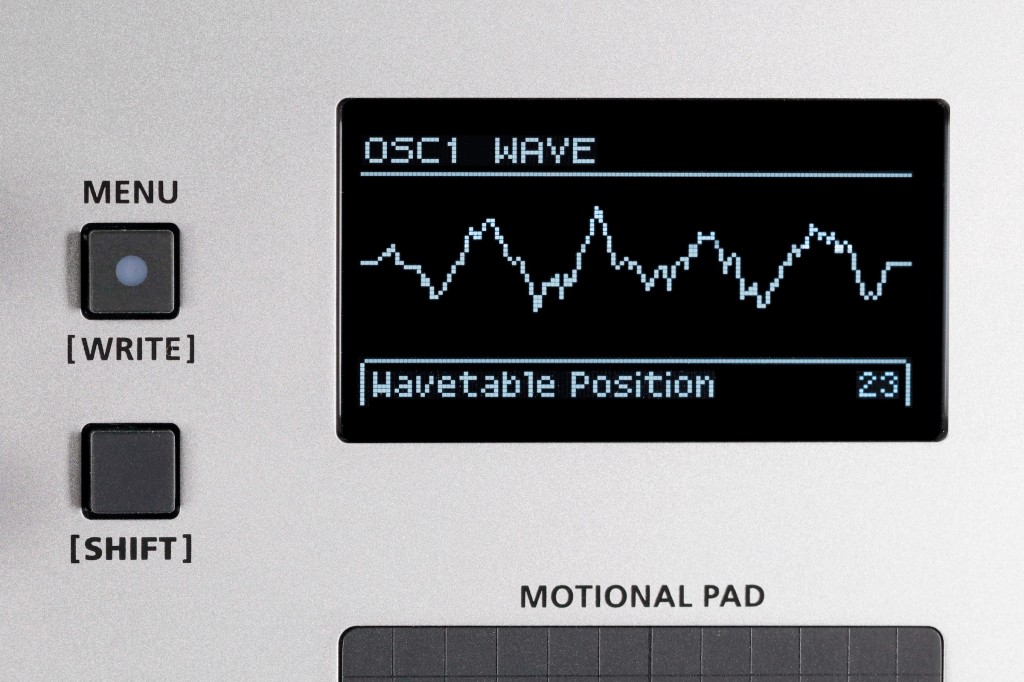
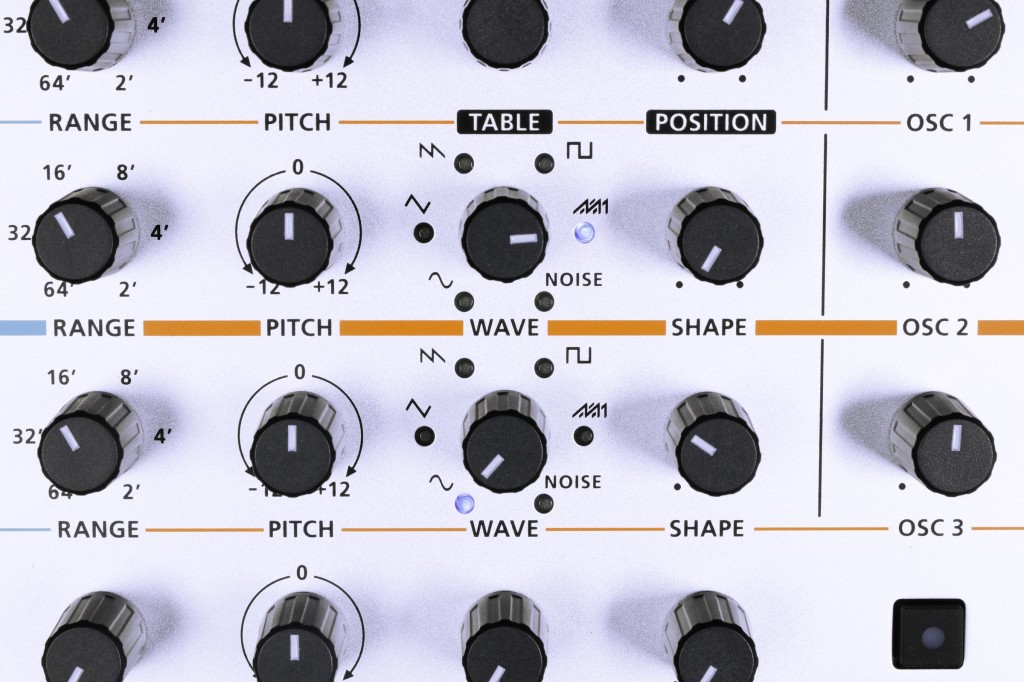
There are really two engines here, even though each is digital. Oscillators 2 + 3 are based on ZEN-Core, Roland’s current do-all digital platform. Oscillator 1 is an entirely new wavetable engine. In that way, we’re seeing something of the approach that Roland employed on the SH-4d.
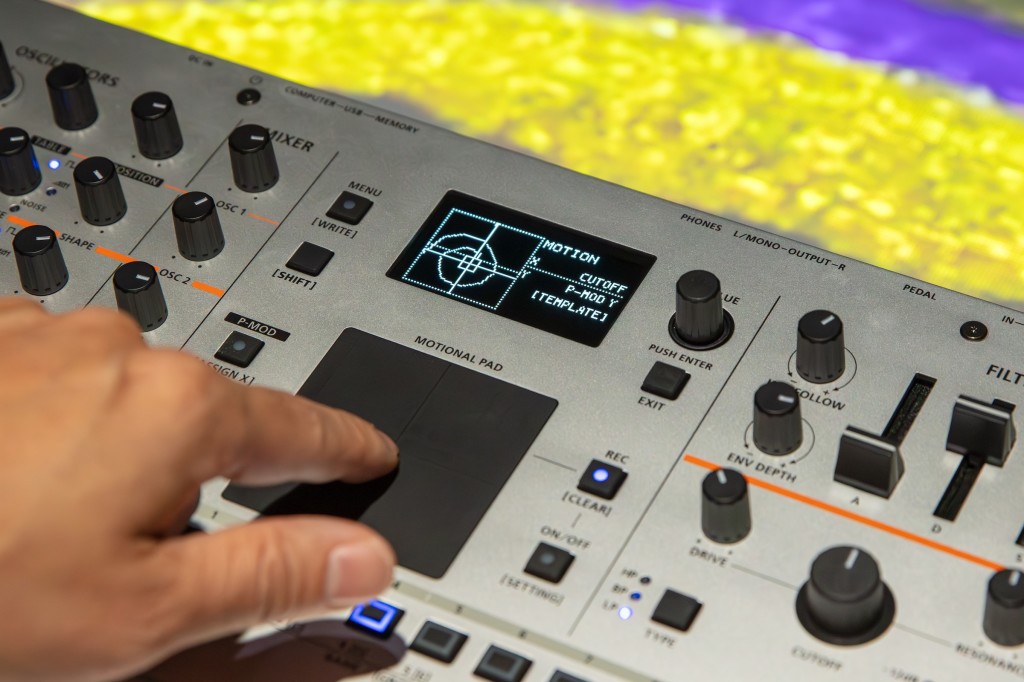
Oh yeah, plus there’s what they call a Motional Pad. (I’ve been pretty motional lately, so I can relate.)
That’s an XY pad you can assign to P-Mod or S-Mod. In other words – hang on to your seats, folks – the GAIA 2 is actually the love child of ZEN-Core and a Prophet VS. Kind of.

Some other possibly non-obvious details: USB-C provides power, and it’s a class-compliant MIDI and audio interface. There’s also a USB-A host port that provides MIDI and storage capability. That means you can connect other devices via USB instead of just MIDI DIN. (Not sure what you use the storage for yet – I’ve asked.)

Model Expansion support – instantaneously
I think the real breakthrough here, though, is the ability to load Model Expansions onto the sound generator. You’ve been able to do that with pricier Roland synths, but if you’re on a budget you could have gotten trapped into collecting too many Boutique synths. The GAIA 2 finally delivers on what the first AIRA SYSTEM-1 promised to do years ago, and let you use different engines as easily as plug-ins.
The SH-101 is pre-installed, so you don’t need Roland Cloud for that. But with a Roland Cloud subscription, you can also add model expansions. At launch, that’s the JUPITER-8, JUNO-106, and JX-8P.
Honestly, if they figured out a way to add the JD-800 on this, too, I’d find this totally irresistible, though they may reserve that for their higher-end synth hardware (for marketing or for engineering reasons).
And there’s more – you can load all the compatible Model Expansions into the keyboard at the same time, so you can instantly change from one sound to the other. That means there’s no swapping of different engines, so this really becomes multiple synths in one.
And here’s a video, though – the first rule of Roland is, don’t judge it on the presets:
GAIA 2 is running about $899.99 street. Now, of course, while the Model Expansions stuff is cool, this meaning you might also look at the slightly cheaper 4-voice KORG minilogue XD, which also features an expandable architecture. There’s now also a desktop module version of the XD.) Personally, I’m excited that now both KORG and Roland offer mid-range keyboards that you can customize.
If you buy something from a CDM link, we may earn a commission.
Remember, the quiz!
SH-101, SH-01, SH-201, SH-01A, SH-101 Model Expansion, GAIA 2. Sharpen your #2 pencils and tell me how many voices each has and which has which mod wheel. Uh, I can’t remember, I’m consulting the Teacher’s Guide… or since I’m the sub, why don’t we all just watch Revenge of the Nerds until class the bell sounds.